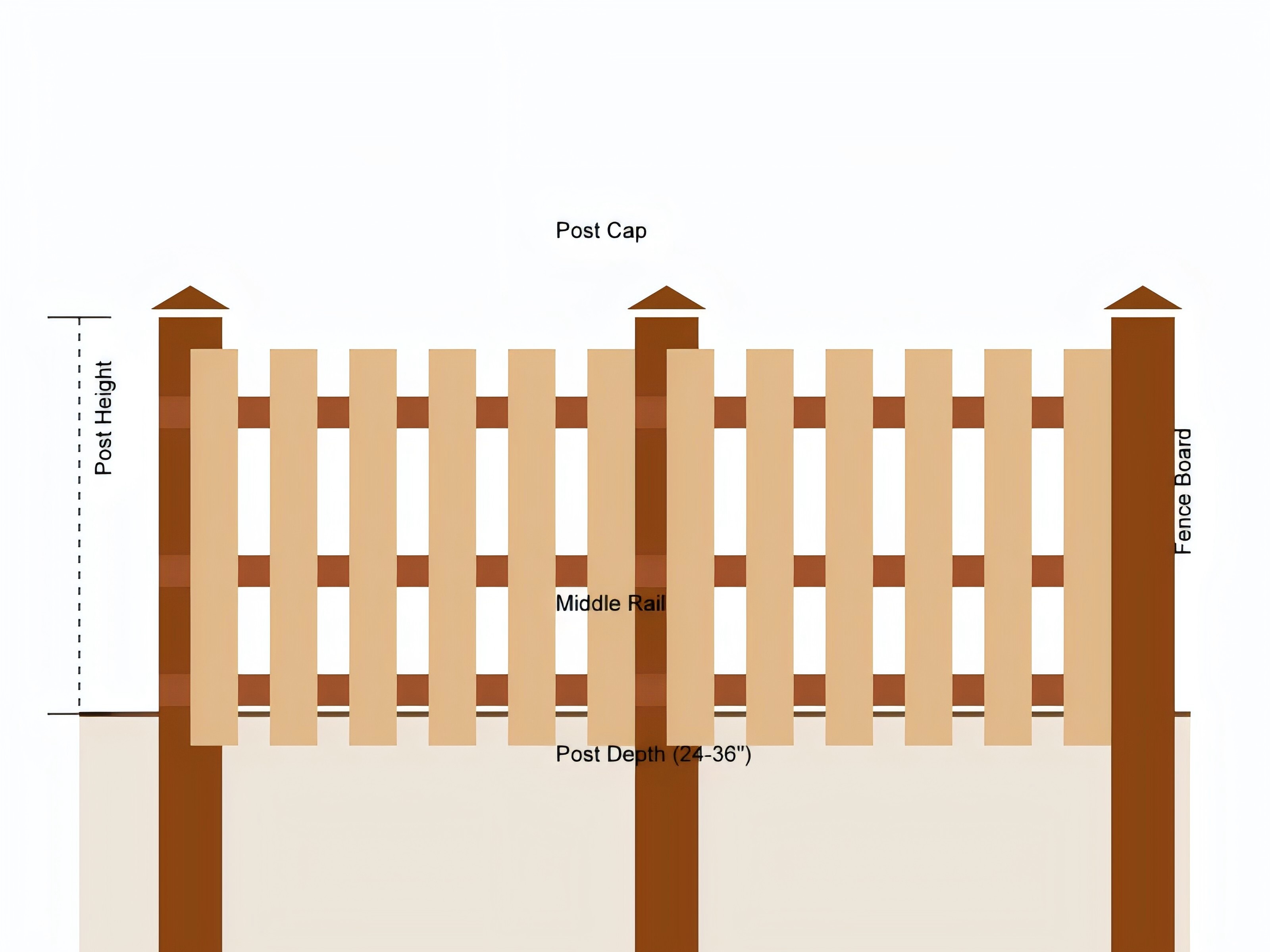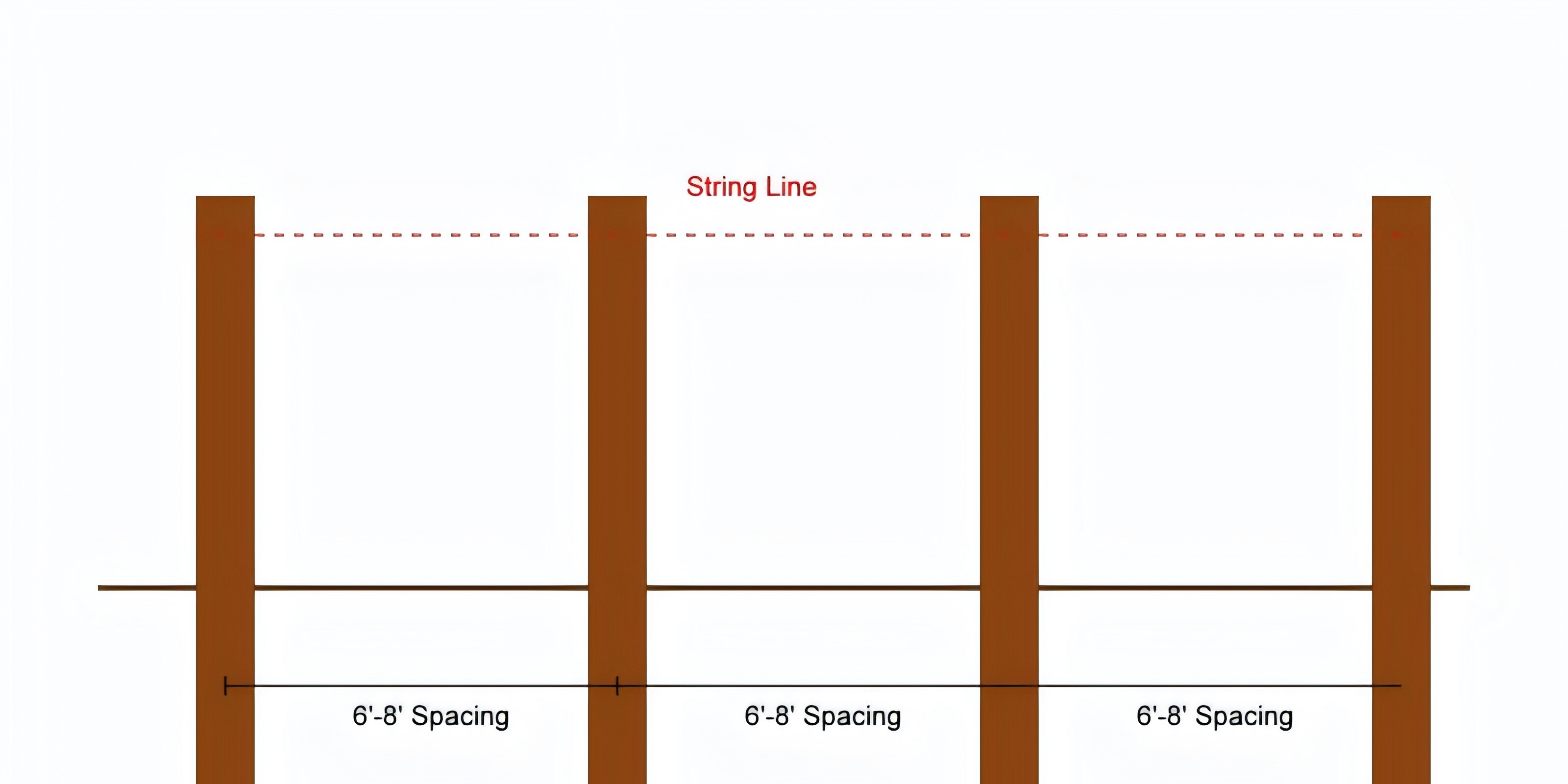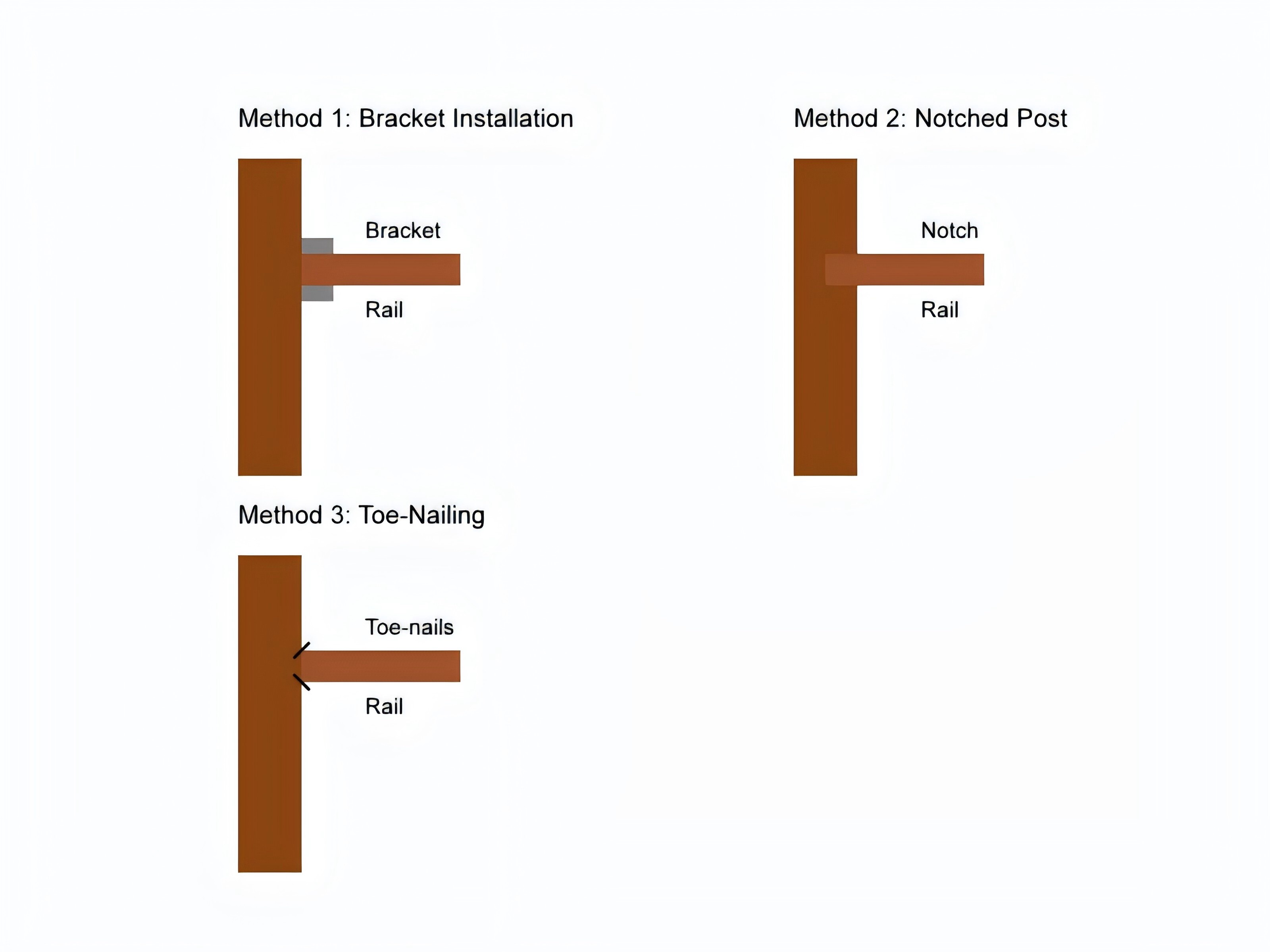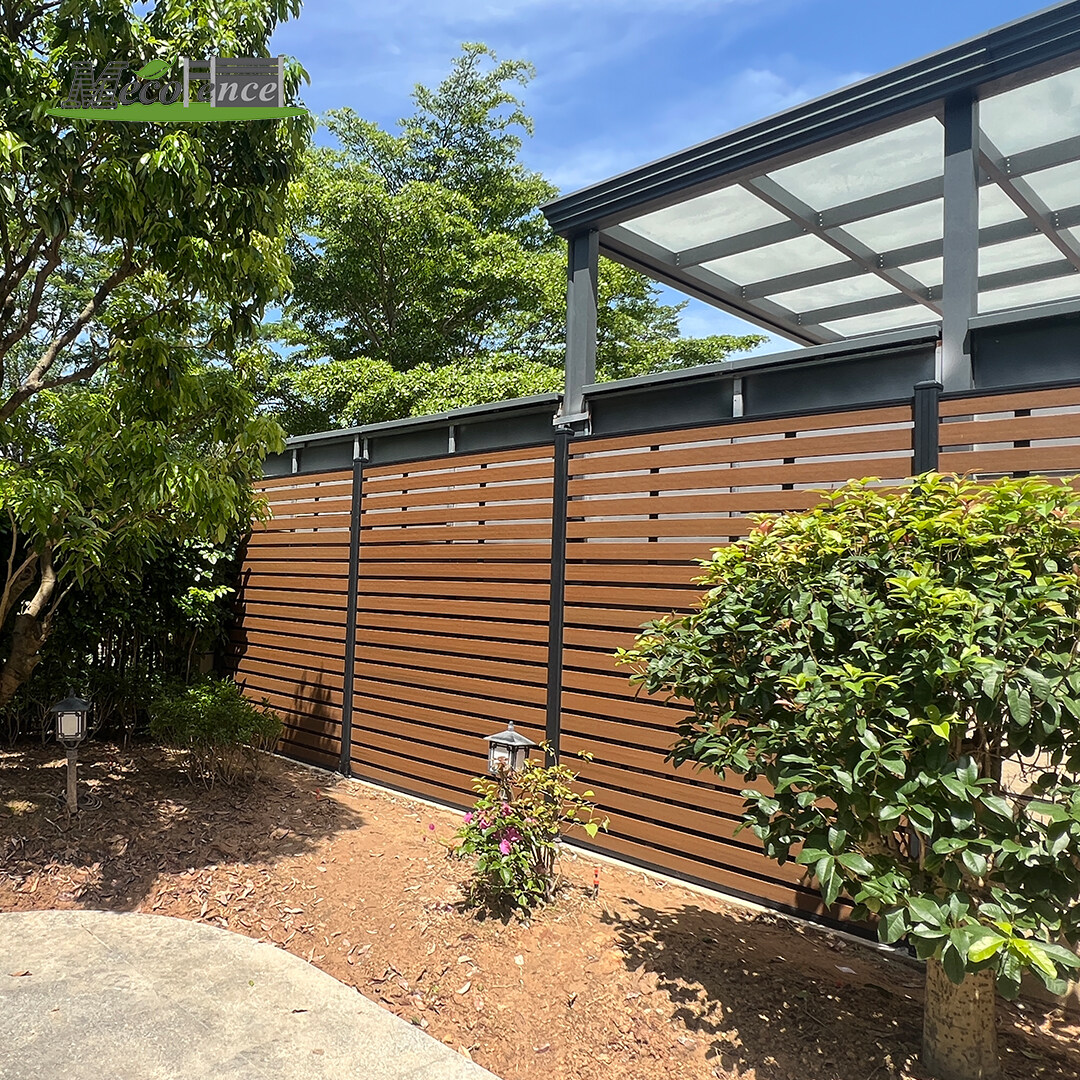Installing a new fence is a significant home improvement project that requires careful planning, precise calculations, and the right materials. Whether you're considering a classic wood privacy fence, modern horizontal design, or durable composite fencing, this comprehensive guide will walk you through everything you need to know about fence installation, materials calculation, and best practices.
1. Understanding Fence Basics: Components and Terminology
Before diving into installation, let's familiarize ourselves with essential fence components:
- Posts - The vertical supports anchored in the ground
- Rails - Horizontal supports connecting posts
- Pickets/Boards - Vertical or horizontal boards creating privacy
- Post Caps - Decorative and protective tops for posts
- Hardware - Brackets, screws, and fasteners

2. Calculating Materials: Your Fence Project Calculator Guide
Material Calculation Formulas:
- Linear Footage = Total perimeter of fenced area
- Number of Posts = (Linear Footage ÷ Post Spacing) + 1
- Number of Panels = Linear Footage ÷ Panel Width
- Post Height = Fence Height + 2' (minimum ground depth)
For a typical 6-foot privacy fence:
- Post Spacing: 6-8 feet apart
- Post Depth: Minimum 2 feet (add 6 inches for gate posts)
- Rail Configuration: 3 rails per section
- Post Size: 4x4 for 6' fence, 6x6 for 8' fence

3. Installation Steps: Professional Methods for Perfect Results
Planning Phase:
- Check local regulations and permits
- Mark utilities
- Measure and mark fence line
- Calculate materials needed
Post Installation:
- Dig holes (diameter 3x post width)
- Pour gravel base (3-4 inches)
- Set posts with concrete
- Check plumb and alignment
- Allow 24-48 hours curing time
Rail Installation:
- Mark rail heights consistently
- Attach brackets or notch posts
- Secure rails level and square
- Space rails evenly (typically 3 per section)

Board/Picket Installation
- Start at corners/gates
- Maintain consistent spacing
- Check plumb periodically
- Secure with appropriate fasteners
4. Material Options and Cost Considerations
Wood Fencing
- Pine: $15-25 per linear foot installed
- Cedar: $25-35 per linear foot installed
- Durability: 10-20 years with maintenance
Composite Fencing
- Material Cost: $35-45 per linear foot installed
- Durability: 20-30 years
- Low maintenance requirements
- Color and style options available
Hardware and Accessories
- Post Brackets: $3-8 each
- Concrete: $5-7 per post
- Fasteners: $25-50 per 100 linear feet
Pro Tips for Successful Installation
1. Consider Terrain
- Account for slopes and grade changes
- Use stepping method for significant slopes
- Maintain consistent post heights
2. Gate Installation
- Use 6x6 posts for gates over 4 feet wide
- Install diagonal bracing
- Account for hardware clearance
- Consider double-gate options for wide openings
3. Material Storage
- Store wood/composite off ground
- Cover materials until installation
- Allow wood to acclimate if needed
4. Tools Required
- Post hole digger/auger
- Level (2' and 4')
- String line
- Power drill/driver
- Circular saw
Maintenance and Care
1. Wood Fences
- Clean annually
- Stain/seal every 2-3 years
- Check for loose boards/hardware
- Address repairs promptly
- Clean as needed
- Check hardware annually
- No sealing required
- Inspect for damage

Conclusion
A successful fence installation requires careful planning, accurate calculations, and attention to detail. Whether choosing wood or composite materials, following these guidelines will help ensure a durable, attractive fence that adds value to your property. Remember to check local building codes, obtain necessary permits, and consider professional installation for complex projects.
PS:
- Post hole digger
- Measuring tape
- String line
- Stakes
- Marking spray
- Shovel
- Level
- Post level
- Drill/driver
- Saw horses
- Safety equipment





